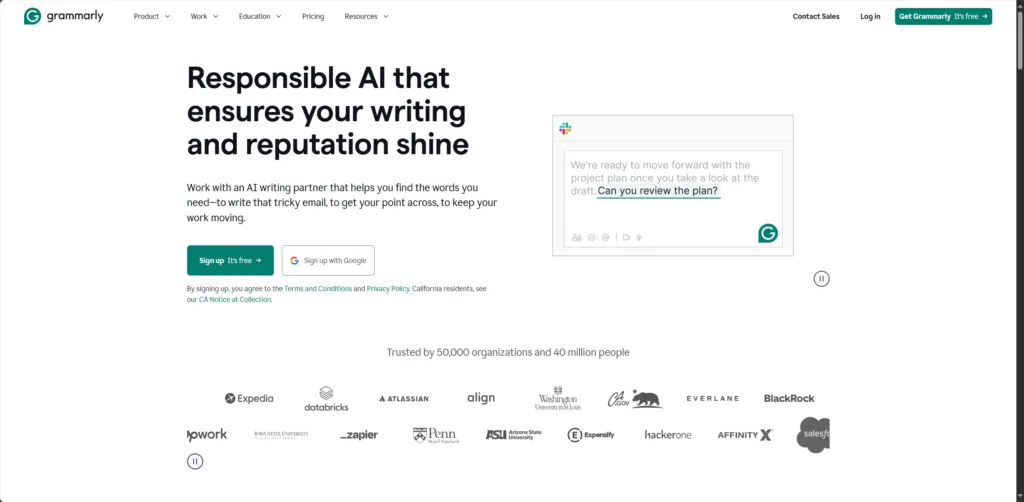Thinking about self-publishing your book? You’re not alone. This guide cuts through the noise and gives you the straight facts on the Advantages and Disadvantages of Self-Publishing – so you can decide if it’s the right path for your author journey.
Self-publishing offers authors complete creative control, higher royalty potential (up to 70% on platforms like Amazon KDP), and faster publication speed compared to traditional publishing. However, it also requires significant upfront investment in editing, cover design, and marketing, all of which fall solely on the author’s shoulders. Traditional publishing, conversely, provides professional support and wider distribution but offers lower royalties (typically 5-18%) and less control. The best choice depends on your individual goals and resources.
Want the full breakdown? We’ve got you covered. Inside, you’ll discover:
- Key Point 1: The real costs of self-publishing (and how to budget smart).
- Key Point 2: Proven marketing strategies that actually work (no fluff).
- Key Point 3: How to avoid the common self-publishing pitfalls.
- Key Point 4: The Step-by-step guide.
- Key Point 5: Expert advice to gain a full understanding. Self-publishing can be incredibly rewarding or incredibly frustrating – it all depends on your approach.
What Exactly is Self-Publishing? (And How Does It Differ from Traditional Publishing?)

Let’s start with the basics. Understanding the fundamental differences between self-publishing and traditional publishing is crucial for making the best decision for your book.
Defining Self-Publishing:
Self-publishing, in its simplest form, means you, the author, are taking on the role of publisher. You’re responsible for every aspect of bringing your book to market, from writing and editing to cover design, formatting, printing (if you choose to offer a print version), distribution, and marketing. You retain full control over the creative process and all the rights to your work. This is enabled by the rise of digital platforms like Amazon Kindle Direct Publishing (KDP), IngramSpark, and others, which have made it easier than ever to reach a global audience.
Traditional Publishing: A Quick Overview:
Traditional publishing, on the other hand, involves working with an established publishing house. You typically start by finding a literary agent, who will then pitch your manuscript (or book proposal) to publishers. If a publisher is interested, they’ll offer you a contract, often including an advance against future royalties. The publisher then takes over most of the production process, including editing, design, printing, distribution, and (some) marketing. While this sounds hands-off, it also means giving up a significant amount of control and a larger share of the profits.
The “Hybrid” Approach: Blurring the Lines:
It’s not always an either/or situation. Many authors are now embracing a “hybrid” approach, combining elements of both self-publishing and traditional publishing. For example, an author might self-publish their first novel to build an audience and demonstrate market viability, then use that success to secure a traditional publishing deal for subsequent books. Or, like Hugh Howey, author of the best-selling Wool series, they might negotiate a contract that allows them to retain ebook rights while selling print rights to a traditional publisher. This gives authors the best of both worlds: control over their digital presence and the wider distribution reach of a traditional publisher.
Here’s a quick comparison:
| Feature | Self-Publishing | Traditional Publishing |
|---|---|---|
| Control | Complete | Limited |
| Royalties | Up to 70% | 5-18% (typically) |
| Speed | Days/Weeks | Months/Years |
| Upfront Costs | Author pays | Publisher pays |
| Marketing | Author’s responsibility | Publisher assists (but author still involved) |
| Distribution to bookstore | Difficult | Easy |
This Table clearly shows the advantages and disadvantages of self-publishing against traditional publishing.
The Alluring Advantages of Self-Publishing (Fulfilling Author Dreams)
Why are so many authors, both new and experienced, choosing the self-publishing route? Let’s explore the key benefits, and how they connect with the deep-seated desires of writers like you.
Complete Creative Control (Autonomy & Self-Expression):

This is arguably the biggest draw for many authors. You’ve poured your heart and soul into your manuscript, and you want to ensure your vision is realized without compromise.
- Content Freedom: With self-publishing, there are no gatekeepers telling you what to write, how to write it, or what genre to fit into. You’re free to explore niche topics, experiment with unconventional structures, and tell the story you want to tell. This resonates deeply with the desire for self-expression, a core motivation for most writers.
- Design Authority: From the cover art to the font choices to the interior layout, you have the final say. You can create a book that perfectly reflects your aesthetic and the tone of your story. This satisfies the need for autonomy and the desire to present your work in a way that feels authentic to you.
- Pricing Power: You decide how much your book will cost. While platforms like Amazon KDP have guidelines, you have considerable flexibility. This is directly tied to the consideration of financial returns. For instance, pricing your ebook between $2.99 and $9.99 on Amazon allows you to take advantage of the 70% royalty option.
- Publication Timeline: Forget waiting months or even years for a publisher’s approval. You can publish your book as soon as you’re ready. This appeals to the desire for efficiency and speed, allowing you to see the fruits of your labor much sooner.
Higher Royalty Potential (Financial Returns):
Let’s talk numbers. On platforms like Amazon KDP, self-published authors can earn up to 70% royalties on their ebook sales. Compare that to the typical 5-18% (and sometimes even lower after your agent takes their 15% cut) offered by traditional publishers. For example, if you sell an ebook for $9.99 on Amazon, you could earn approximately $7 per copy. With a traditional publisher, that same sale might net you closer to $1, or even less. While success is never guaranteed, the potential for higher earnings is a significant motivator.
Understanding these numbers is crucial when developing your Book Pricing Strategy.
Faster Time to Market (Efficiency & Speed):
Traditional publishing is notoriously slow. From querying agents to signing a contract to the actual publication date, the process can easily take a year or two, and often longer. With self-publishing, the timeline is dramatically shortened. Once your manuscript is edited, formatted, and your cover is designed, you can upload it to platforms like Amazon KDP and have it available for sale within days, sometimes even hours. This speed allows you to quickly capitalize on trends, receive reader feedback sooner, and maintain your creative momentum.
Direct Connection with Readers (Self-Expression & Community):

Self-publishing platforms offer opportunities to interact directly with your readers through author pages, reviews, and social media. This direct connection is invaluable. You can build a loyal fan base, gather feedback to improve your writing, and foster a sense of community around your work. This satisfies the deep-seated desire to share your stories and connect with others who appreciate them. As Joanna Penn, a NYT and USA Today bestselling author and founder of The Creative Penn, puts it: “I believe this is the best time in history to be a writer because of self-publishing, the democratization of publishing, the ability to reach readers all over the world.”
Retaining All Rights (Autonomy & Long-Term Control):
When you self-publish, you retain all rights to your work – copyright, subsidiary rights (film, translation, etc.). This is a crucial distinction from traditional publishing, where you typically sign over some or all of these rights to the publisher, often for the life of the copyright. Maintaining control over your intellectual property gives you long-term flexibility and potential for future opportunities.
A key part of this is understanding how to get your ISBN for self-published books.
No Gatekeepers (Lowering the Barrier to Entry):
Traditional publishing is highly competitive. Aspiring authors often face countless rejections before (or if) they ever land an agent or a book deal. Self-publishing removes these gatekeepers. Anyone with a completed manuscript and the willingness to learn the process can publish their work. This democratization of publishing opens doors for diverse voices and stories that might otherwise go unheard.
The Honest Disadvantages of Self-Publishing (Facing the Challenges)
While self-publishing offers incredible freedom and potential, it’s crucial to be realistic about the challenges involved. Let’s delve into the downsides, and importantly, how to mitigate them.
Upfront Costs (Financial Planning):
Unlike traditional publishing, where the publisher covers the production costs, self-publishing requires you to invest your own money upfront. These costs can add up quickly, so careful budgeting is essential.
-
Itemized Cost Breakdown: Here’s a realistic look at potential expenses:
- Editing: This is arguably the most important investment. Expect to pay anywhere from $500 to $3000+ for professional editing, depending on the length and complexity of your manuscript, and the type of editing needed (developmental, line editing, copyediting, proofreading).
- Cover Design: A professional-looking cover is crucial for attracting readers. Costs can range from $100 for a pre-made cover to $500 or more for a custom design.
- Formatting: Proper formatting ensures your book looks professional on various devices. You can use free tools like Kindle Create, or invest in software like Vellum (around $250) or hire a professional formatter (around $50-$500).
- ISBN: While you can get a free ISBN from platforms like Amazon KDP, purchasing your own (around $125 for a single ISBN from Bowker in the US) gives you more control and is recommended if you plan to distribute your book widely.
- Marketing & Advertising: While you can start with free marketing efforts, paid advertising (like Amazon Ads or Facebook Ads) will likely be necessary to reach a wider audience. Budgeting at least a few hundred dollars for initial marketing is a good starting point.
It’s also useful to know, if printing overseas, How Much Does It Cost to Print a Book in 2025?
-
Budgeting Tips:
- Prioritize: Focus on essential services first: professional editing and a high-quality cover.
- Start Small: You don’t have to spend a fortune initially. You can gradually invest more in marketing as your book starts generating revenue.
- DIY Where Possible: If you have the skills, you can save money by formatting your book yourself or creating a basic cover using tools like Canva.
- Barter: Consider offering your skills to another author in your network.
The Marketing Mountain (Promotion & Distribution):
This is where many self-published authors struggle. Simply putting your book online doesn’t guarantee sales. You are responsible for all marketing and promotion.
- The Reality Check: Be prepared to spend a significant amount of time and effort on marketing. It’s an ongoing process, not a one-time task.
- Beginner-Friendly Marketing Strategies:
- Author Website and Email List: This is your home base online. An email list allows you to directly communicate with your readers and build a loyal following.
- Social Media Marketing: Choose 1-2 platforms where your target audience hangs out (e.g., Goodreads and Instagram for fiction authors, LinkedIn for non-fiction). Focus on building relationships, not just self-promotion.
- Amazon Advertising: Start with a small budget and experiment with different targeting options.
- BookBub Ads: A powerful, but often expensive, platform for promoting discounted ebooks.
- Book Reviews: Actively seek reviews from book bloggers, reviewers, and readers.
Quality Control is Crucial (Avoiding the Stigma):
While the stigma surrounding self-publishing is diminishing, poorly produced books do still exist. To ensure your book is taken seriously, prioritize quality.
- The Importance of Professional Editing: Don’t skip this step! A well-edited book is essential for credibility and reader satisfaction. A professional editor will catch errors you might miss and help you improve your writing. There are different kinds of editing, such as Developmental Editing, Line editing, Copy Editing, and proofreading. Ensure you Prepare Your Book Files for Printing correctly.
- Cover Design Matters: Your cover is the first thing potential readers see. It needs to be eye-catching, genre-appropriate, and professional.
- Formatting for Readability: Proper formatting ensures your book is easy to read on different devices. Use professional software or hire a formatter.
The Lonely Road (Building a Support System):
Self-publishing can feel isolating. You’re making all the decisions yourself, and it’s easy to get overwhelmed.
- Acknowledge the potential isolation.
- Online Communities: Join Facebook groups, online forums, and communities dedicated to self-publishing. Connect with other authors, share experiences, and ask for advice.
- ALLi: Consider joining the Alliance of Independent Authors (ALLi) for support, resources, and advocacy. As Founder-Director Orna Ross states, “‘Self-publishing 3.0’ is about putting the author at the heart of their publishing, as opposed to being told what is best for their work.” ALLi embodies this philosophy.
- Critique Groups: Find a group of trusted writers to provide feedback on your work.
It’s also worth recognizing the “hidden costs” of self-publishing, an insight often overlooked. Beyond the direct expenses, there’s the time you invest – time spent learning, marketing, and managing the business side of things. This is time you could be spending writing. It’s a balancing act, and being aware of this “time value” is crucial for long-term success. It is also necessary to consider multi-platform publishing. Although Amazon is the big player, do not ignore other platforms.
The Step-by-Step Guide to Self-Publishing (Actionable Advice)
So, you’ve weighed the pros and cons, and you’re leaning towards self-publishing. Now what? Here’s a practical roadmap to guide you through the process:
Writing and Editing:

This might seem obvious, but it all starts with a great book. Don’t rush this stage.
- Self-Editing: Before you even think about hiring a professional editor, do your absolute best to polish your manuscript yourself.
- Read your work aloud: This helps you catch awkward phrasing and typos.
- Use software like Grammarly or ProWritingAid: to identify grammar and style issues. These tools aren’t a substitute for a human editor, but they can help you clean up your manuscript.
- Take breaks between writing and editing: A fresh perspective is invaluable.
- Let your manuscript “rest”: Put it aside for a few weeks (or even months) and then come back to it with fresh eyes.
- Professional Editing: This is a non-negotiable investment.
- Developmental Editing: This is the “big picture” edit, focusing on story structure, character development, pacing, and overall narrative. It’s often the most expensive type of editing, but it can be transformative.
- Line Editing: This focuses on sentence-level issues, such as clarity, flow, and voice.
- Copyediting: This focuses on grammar, spelling, punctuation, and consistency.
- Proofreading: This is the final check, catching any remaining typos or errors before publication.
- Finding an Editor:
- How to work with an editor:
- Be Clear about your vision.
- Be open to feedback.
- Communicate effectively.
Cover Design and Formatting:
Your cover is your book’s first impression. It needs to be professional, genre-appropriate, and eye-catching.
- Cover Design:
- Professional Designer: This is the recommended option for most authors. A good designer will understand genre conventions and create a cover that attracts your target audience.
- Pre-made Covers: A more affordable option, but you’ll have less control over the design.
- DIY (with caution): If you have strong design skills, you can use tools like Canva, but be aware that amateurish covers can deter readers.
- Formatting:
- Ebook Formatting: Relatively straightforward. You can use free tools like Kindle Create or invest in software like Vellum (Mac only) or Atticus.
- Print Formatting: More complex. Consider hiring a professional formatter or using software designed for print layout (like Vellum or Adobe InDesign).
Choosing Your Publishing Platform(s):
Where will you sell your book? Here are some of the major players:
- Amazon Kindle Direct Publishing (KDP): The dominant platform for ebooks, offering up to 70% royalties. KDP also offers print-on-demand services.
- IngramSpark: A major distributor for print books, allowing you to reach bookstores and libraries worldwide. IngramSpark also offers ebook distribution.
- Draft2Digital: An aggregator that distributes your ebook to multiple retailers (Apple Books, Barnes & Noble, Kobo, etc.).
- Kobo Writing Life: Kobo’s direct publishing platform.
- Google Play Books: Direct publishing via Google.
Choosing Platform:
- Ebook: Start with Amazon, consider using Draft2Digital to reach others.
- Paperback: Amazon and IngramSpark.
ISBNs and Copyright:
- ISBN (International Standard Book Number): A unique identifier for your book.
- You can get a free ISBN from Amazon KDP: but it’s tied to Amazon.
- It’s generally recommended to purchase your own ISBNs from Bowker (in the US): or your country’s ISBN agency. This gives you more control and flexibility.
- Copyright: While your work is automatically copyrighted upon creation, formally registering with the U.S. Copyright Office strengthens your legal standing in case of infringement.
Pricing and Launch Strategy:
- Pricing:
- Ebooks: $2.99 – $9.99 is a common price range for self-published ebooks, allowing you to take advantage of Amazon’s 70% royalty option.
- Paperbacks: Consider production costs, competitor pricing, and your target profit margin.
- Launch Strategy:
- Build anticipation before launch: (email list, social media).
- Gather reviews: (send advance review copies – ARCs).
- Consider a launch promotion: (discounted price, giveaway).
- Coordinate marketing efforts: (advertising, social media posts, blog tour).
- Utilizing Online Tools, such as detect Plagiarism: You could refer to Utilizing Online Tools to Detect Plagiarism and Rectify Writing Errors.
Basic Bookkeeping for Authors:
- Tracking income and expense: Keep the record of your expense and your income.
- Understanding sales tax obligations: Check if you collect and remit sales tax.
- Basic tax information: set aside the money for tax payment.
Conclusion – Empowering the Author
Self-publishing offers a path to realizing your writing dreams, one that puts you firmly in control. It offers the allure of complete creative freedom, higher royalty potential, and a direct connection with your readers. However, it also demands significant upfront investment, relentless marketing efforts, and a resilient mindset. There’s no universally “right” or “wrong” choice between self-publishing and traditional publishing; the best path depends entirely on your individual goals, resources, and personality.
Weigh the advantages and disadvantages of self-publishing carefully. Consider your strengths and weaknesses. Are you comfortable with the business side of things? Are you willing to invest the time and money required? Do you thrive on independence, or do you prefer the support of a team?
Ultimately, the decision is yours. Do your research, trust your instincts, and embark on the path that feels most aligned with your vision. And remember, whichever route you choose, the most important thing is to keep writing, keep learning, and keep believing in your story.







